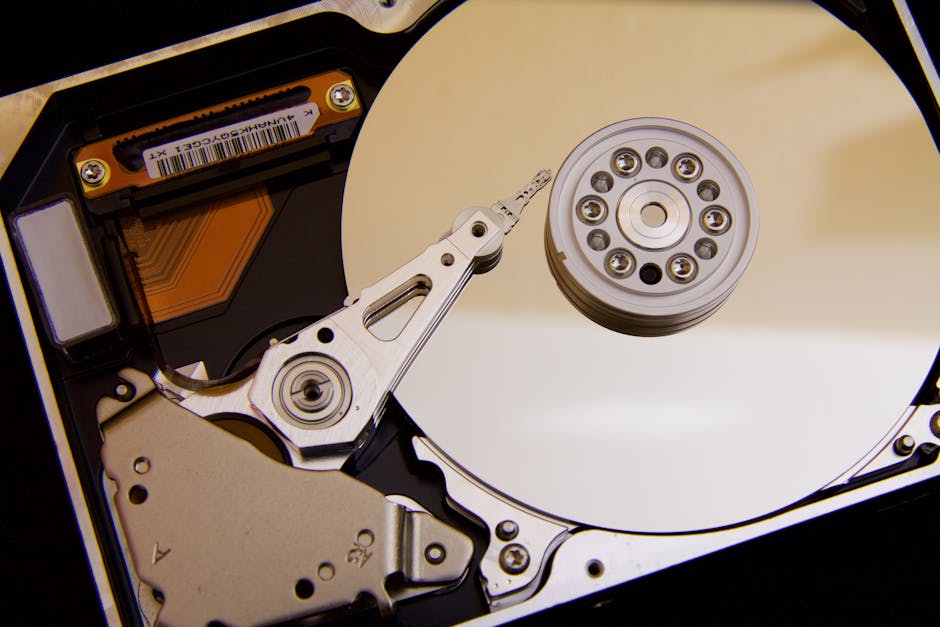Ransomware No More: A How-To Guide for Computer Users
October 1, 2024

Don't panic about data loss in Columbus, OH! Get expert Data recovery Columbus OH services. Securely recover your critical files today.
December 12, 2025

Unlock the power of Data analytics healthcare. Explore applications, benefits, and career paths to transform patient care and operations.
December 11, 2025

Unlock SMB growth! Discover essential IT solutions for SMBs to master cybersecurity, optimize infrastructure, and boost productivity.
December 10, 2025
October 1, 2024
Ransomware is a growing menace in cybercrime, making how to remove ransomware from computer a pressing question for many. For those seeking a quick solution, here’s a straightforward approach:
Ransomware attacks lead to data being locked or encrypted, making it inaccessible until a ransom is paid. This tactic exploits the value of data, causing distress not just to individuals, but also to businesses large and small.
The impact of ransomware goes beyond mere inconvenience. For companies, a successful attack can halt operations, expose sensitive information, and result in significant financial loss. Therefore, understanding and addressing how to remove ransomware from computer systems is crucial in safeguarding your data. It's a clear reminder that, in the digital age, securing your information is not just necessary; it's vital for survival.

Detecting a ransomware attack early can save you a lot of trouble. Imagine you’re working on your computer, and suddenly, everything slows down, or you get a strange pop-up. These could be signs of ransomware trying to take over.
Early detection is your best friend when it comes to fighting ransomware. The sooner you spot it, the quicker you can act to stop it from spreading. Here are some ways to catch it early:
Antivirus Alerts: Your antivirus software is like a guard dog. It keeps an eye out for anything suspicious. If it barks—meaning it sends you an alert—pay attention. This could be your first sign of trouble.
Suspicious Activity: Keep an eye on your computer’s behavior. Is it running slower than usual? Are files suddenly inaccessible? These could be red flags.
Antivirus software can detect ransomware by recognizing its digital signature or the way it behaves. Some advanced tools use behavior-based detection, which looks at what the software does, not just what it is. For instance, if a program starts encrypting lots of files quickly, your antivirus might flag this as suspicious.
Ransomware often causes unusual activity on your computer. Here are some things to watch for:
Unusual File Changes: If files are being renamed or encrypted without your action, this is a major warning sign.
Pop-ups and Ransom Notes: A sudden pop-up demanding payment to open up files is a clear indication of ransomware.
Abnormal Network Traffic: Ransomware sometimes sends data to an external server. If you notice unexpected spikes in network activity, it could mean your data is being exfiltrated.
So, you've spotted something suspicious—what now? First, don’t panic. Here’s a quick action plan:
Disconnect from the Internet: This stops the ransomware from spreading and communicating with its server.
Run a Full System Scan: Use your antivirus software to scan and isolate the threat.
Seek Professional Help: If you're unsure about handling it yourself, contact cybersecurity experts for assistance.
Detecting ransomware early is crucial. By staying alert and knowing what to look for, you can act swiftly to protect your valuable data.
Next, we will explore how to remove ransomware from your computer effectively, ensuring your data remains safe and secure.
Removing ransomware from your computer is a critical task that requires swift and decisive action. Follow these steps to ensure your system is safe and your data is secure.
Disconnect Immediately: As soon as you suspect ransomware, disconnect the infected device from the internet and any network connections. This prevents the ransomware from spreading to other devices or communicating with its control server.
Isolating the device buys you time to assess and tackle the situation without risking other systems.
Ransomware Strain Diagnosis: Knowing the specific type of ransomware helps in choosing the right removal strategy. Use reputable diagnosis tools to identify the ransomware strain.
Understanding what you're dealing with is crucial for effective removal.
Antimalware Software: Run a full system scan using updated antimalware software. This can detect and quarantine the ransomware.
Manual Removal: If software tools can't fully remove the threat, you might need to manually delete the ransomware files. This should only be done by experienced users or professionals, as it risks deleting critical system files.
Data Recovery: Once the ransomware is removed, restore your files from a clean backup.

Having regular backups is your safety net. They allow you to restore your data without paying a ransom.
By following these steps, you can effectively remove ransomware from your computer and secure your data. Next, we'll discuss how to prevent future ransomware attacks and keep your systems safe.
Preventing ransomware is much easier than dealing with it after the fact. Here are some key strategies to keep your systems safe.
Regular backups are your best defense against ransomware. By having a copy of your data, you can restore it without paying a ransom if you get hit.
Keeping your software up-to-date is crucial. Many ransomware attacks exploit known vulnerabilities in outdated software.

Implementing robust security measures can greatly reduce the risk of a ransomware attack.
Adding an extra layer of security with two-factor authentication (2FA) makes it harder for attackers to access your systems, even if they have your password.
Knowledge is power. Educate your team about the risks of ransomware and how to avoid them.
By adopting these preventative measures, you can significantly reduce the risk of falling victim to a ransomware attack. Up next, we'll address some frequently asked questions about ransomware removal.
Yes, ransomware can often be removed from a computer using antimalware software. These tools can scan your system, identify the ransomware, and quarantine or remove it. However, while the malware itself can be eliminated, recovering encrypted files is another challenge. Sometimes, specialized decryption tools are available, but not always. It's crucial to act fast and use reliable software to increase your chances of success.
A factory reset can be effective in removing ransomware, as it wipes the operating system clean and reinstalls it to its original state. However, this method also results in data loss. All files, applications, and settings will be erased unless you've backed them up. If ransomware has encrypted your files, a reset won't decrypt them, so ensure you have backups before proceeding with this option.
The first step is to disconnect the infected device from all networks and external devices. This helps prevent the ransomware from spreading to other systems. Once isolated, begin an investigation to identify the ransomware type. This will guide your next steps, whether using antimalware tools or seeking professional help. Disconnecting quickly can limit the damage and aid in the recovery process.
Dealing with ransomware can be daunting, but remember, you're not alone. At Next Level Technologies, we specialize in providing comprehensive managed IT services that cater to businesses of all sizes. Our goal is to equip you with the tools and knowledge you need to tackle cyber threats head-on.
Our approach to ransomware removal is thorough and strategic. We focus on isolating infected devices, identifying the specific type of ransomware, and using effective antimalware solutions to remove it. We also emphasize the importance of regular backups and system restores to ensure data recovery is smooth and efficient.
Beyond removal, we prioritize prevention. By implementing security best practices, conducting regular software updates, and providing continuous IT support, we help safeguard your systems against future attacks. Our team is dedicated to keeping your business secure and operational.
For more information on how we can support your business with our IT solutions, visit our Managed IT Services and IT Support page. Let us help you stay ahead of cyber threats and focus on what you do best.
Don't panic about data loss in Columbus, OH! Get expert Data recovery Columbus OH services. Securely recover your critical files today.
December 12, 2025
Unlock the power of Data analytics healthcare. Explore applications, benefits, and career paths to transform patient care and operations.
December 11, 2025
Next Level Technologies was founded to provide a better alternative to traditional computer repair and ‘break/fix’ services. Headquartered in Columbus, Ohio since 2009, the company has been helping it’s clients transform their organizations through smart, efficient, and surprisingly cost-effective IT solutions.
